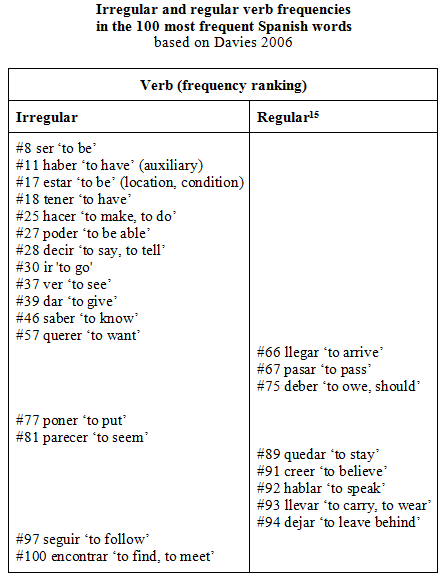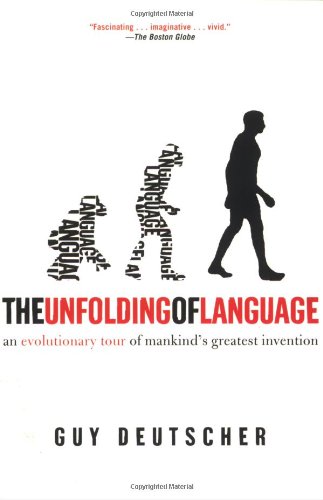It may seem perverse that the first verbs presented in most Spanish textbooks, typically ser and tener, are irregular. In fact, ser is undoubtedly the most irregular verb in the language. Why not start with nice, friendly regular verbs like hablar, comer, and vivir, and deal with the irregulars later?
The answer, of course, is that the most frequent, can’t-live-without-’em Spanish verbs are irregular. This is not a coincidence. Over time, the natural tendency in language evolution is to reduce irregularity by imposing a language’s normal patterns on previously exceptional forms, a process called analogy. That’s how English ended up with regular past tenses like helped in place of the Middle English form holp. Only the most frequently used words are able to resist analogy and maintain their irregularity.
(Analogy can also go in the opposite direction, causing previously tame verbs to ‘go rogue’, but we’ll sidestep this inconvenient fact for simplicity’s sake.)
Actual verb frequency data are impressive. The table below shows the regular and irregular verbs among the 100 most frequent Spanish words, as cataloged in Mark Davies’s A Frequency Dictionary of Spanish: Core Vocabulary for Learners. The dozen most frequent verbs are all irregular. The most frequent regular verb (llegar ‘to arrive’) appears more than halfway down the list, and irregulars remain common throughout.
I’ve counted llegar and creer as regular verbs, by the way, because their spelling complications (like the u in llegué and the y in creyó) are completely predictable given the rules of Spanish pronunciation and spelling.
Because Spanish splits ‘to be’ into ser and estar, and ‘to have’ into haber and tener, the English versions of these verbs are of higher frequency. According to Mark Davies and Dee Gardner’s A Frequency Dictionary of Contemporary American English: Word Sketches, Collocates and Thematic Lists, ‘to be’ is #2 in English, and ‘to have’ #8. Another comparative goodie concerns subject pronouns. As you might expect, since Spanish usually relies on conjugation alone to say who did something, its subject pronouns are further down the frequency list than are those of English. See the comparison below.
Overall, it’s surprising how much information one can glean from these lists. Muchas gracias, Prof. Davies.




